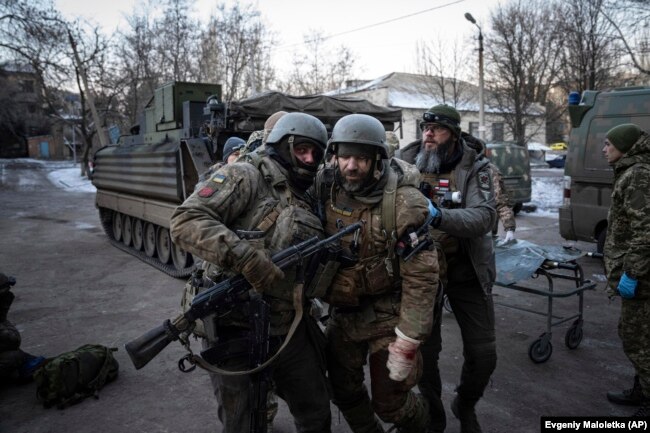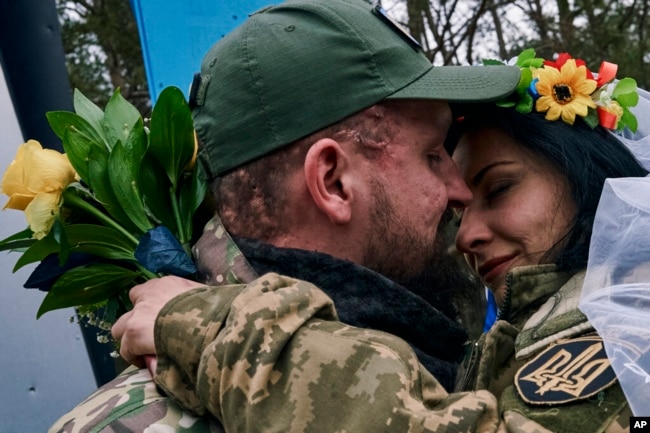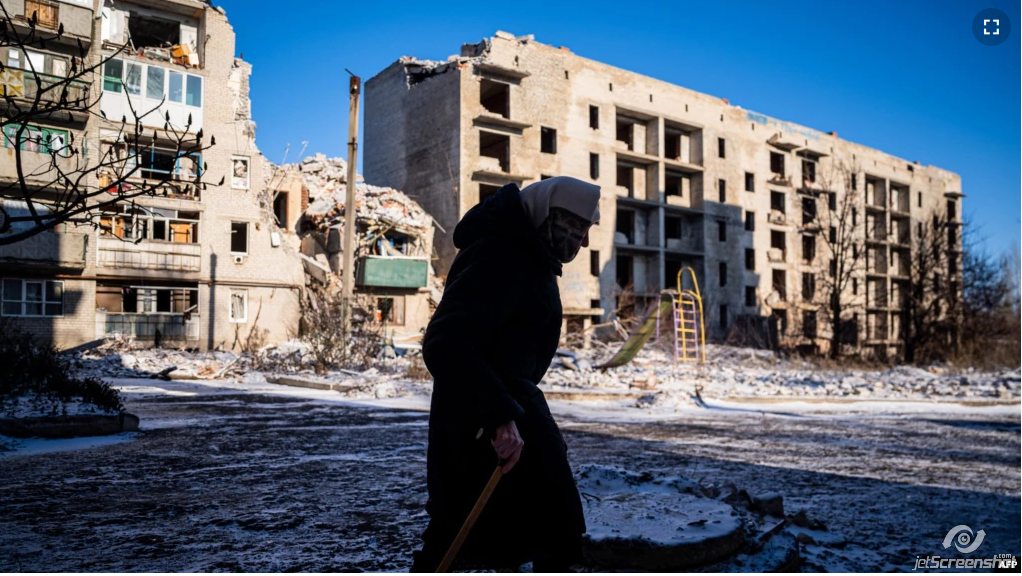By William Echols, for Polygraph
Nikolay Patrushev
Secretary of the Security Council of Russia
“The events in Ukraine aren’t a clash between Moscow and Kyiv. It’s a military confrontation between NATO, above all the U.S. and Britain, and Russia.”
Source: Argumenty i Fakty, January 9, 2023
FALSE
More than 10 months after invading Ukraine, Russian officials continue to provide false rationalizations for their war. The latest is from Nikolay Patrushev, a top adviser to Russian President Vladimir Putin.
Patrushev is secretary of the country’s Security Council. He regularly spreads disinformation about the war.
In an interview with Russia’s state-owned Argumenty i Fakty newspaper, Patrushev denied that Russia is fighting Ukraine. Rather, he said, Moscow’s conflict is with the North Atlantic Treaty Organization or NATO, the 30-member European defensive military alliance that includes the United States:
“The events in Ukraine aren’t a clash between Moscow and Kyiv. It’s a military confrontation between NATO, above all the U.S. and Britain, and Russia. Fearing direct contact, NATO instructors are driving Ukrainian guys to certain death.”
That is false.
Russia invaded in February despite the lack of a credible threat from Ukraine or NATO. That invited help from the West, and Ukrainian defenders since have showed courageous resistance, winning back territory Russia illegally tried to annex.

NATO members have helped Ukraine defend itself by providing military aid, and some analysts say this amounts to a proxy war. But evidence shows that Russia had hoped to quickly oust Ukraine’s government.
Moreover, U.S. President Joe Biden warned Russia against attacking, predicting “widespread human suffering and diminish Russia’s standing.” He also warned Moscow that an invasion would come with “swift and severe costs on Russia.”
So, there should be no surprise on Putin’s part that the U.S. and European nations would stand up for Ukraine’s independence.
In fact, Putin anticipated a weak Western response.
Days before the invasion, European and American intelligence officials said that Putin was emboldened by the belief that the U.S. would not impose strong sanctions on Russia, The New York Times reported.
Russia had already clandestinely invaded Ukraine in 2014, annexing Crimea and inciting a separatist war in the eastern Donbas region.
Days before last year’s invasion, a U.S. defense official had warned that Russia intended to take Kyiv and “decapitate” the government. Russian battle plans later obtained by The New York Times showed that Moscow expected victory within days.
Russia initially attacked in northern, southern and eastern Ukraine under the pretext of “denazifying” and “demilitarizing” the country. Putin initially claimed Russia had no “plan to occupy Ukrainian territory.”
Russia forces did take large swaths of Ukrainian territory in the south and east, however, wreaking vast destruction and death. The Kremlin now says keeping that captured land is a precondition for peace talks.
With the help of western military aid, Ukrainian counteroffensives gradually pushed the Russians out of areas around Kyiv and forced a “humiliating withdrawal” from the regional capital Kherson in November.
Mounting Russian battlefield losses corresponded with a shift in rhetoric. In August, a top Russian state TV propagandist claimed that Russia was at war with NATO, not Ukraine, and was now fighting for its own survival.
There is no doubt that Ukraine’s situation would be dire without the missile launchers, air defense systems and artillery that have poured in from the U.S., Britain and others. But neither is Ukraine out of the woods.
“Ukraine’s military capability and economy are now dependent almost entirely on lifelines from the West – primarily, the United States. … We have a determined partner in Ukraine that is willing to bear the consequences of war so that we do not have to do so ourselves in the future,” the former U.S. Secretary of State Condoleeza Rice and former Defense Secretary Robert Gates recently wrote.
Still, Russia chose to invade Ukraine, seized vast swaths of Ukrainian land and systematically targeted civilian infrastructure, destroying villages, towns and cities. Russian forces stand accused of thousands of war crimes, including executing civilians and bombing hospitals.
While individual NATO members are sending arms and other aid to Ukraine, NATO itself says it is playing a defensive, coordinating role. NATO has not committed soldiers or taken direct action against Russia.
U.S. aid to Ukraine so far represents about 5.6 percent of U.S. defense spending, wrote Timothy Ash, an associate fellow with the Russia and Eurasia program at Chatham House, in November. The battlefield impact of Western support has been extensive, however.
“The Ukrainian armed forces have already killed or wounded upwards of 100,000 Russian troops, half its original fighting force; there have been almost 8,000 confirmed losses of armored vehicles including thousands of tanks, thousands of APCs [armored troop vehicles], artillery pieces, hundreds of fixed and rotary wing aircraft, and numerous naval vessels.
“U.S. spending of 5.6% of its defense budget to destroy nearly half of Russia’s conventional military capability seems like an absolutely incredible investment.”
Polls indicate a clear majority of Ukrainians believe they can win.

Yet, Ukrainians do not view themselves as wards of the West despite regular appeals for more arms. Ukrainian President Volodymyr Zelenskyy recently vowed that “the war will end when [Russian] soldiers leave or they are thrown out.”
Also undermining Patrushev is that fact that the U.S. has sought to avoid escalation by restricting the arms supplied primarily to defensive weapons not meant to attack on Russian soil.
For example, the U.S. has not provided longer-range Army Tactical Missile System (ATACMS), which could allow deep strikes in Russia.
Biden warned that giving such weapons to Ukraine risked alienating other NATO members, who “are not looking to go to war with Russia.”
The U.S. also blocked fellow NATO member Poland’s plan to send fighter jets to Ukraine, also to avoid perceptions that NATO was becoming directly involved.
By William Echols, for Polygraph





